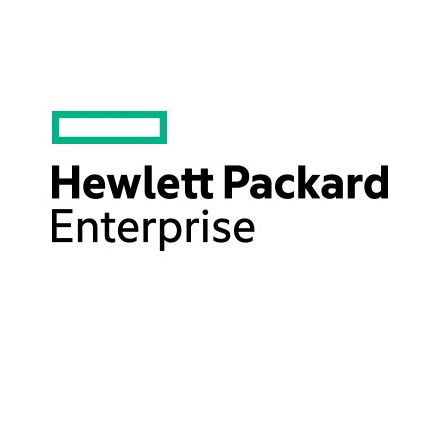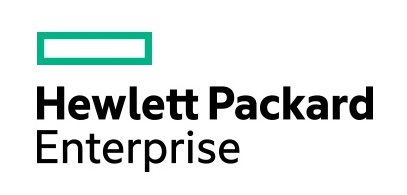
SOCs forgo security basics, leaving 82 percent of organisations below target maturity levels and vulnerable
 Hewlett Packard Enterprise (HPE) has published its fourth annual State of Security Operations Report 2017, which provides deep analysis on the effectiveness of organisations’ security operations centres (SOCs), and best practices for mitigating risk in the evolving cybersecurity landscape. With increased pressure to rapidly innovate and align security initiatives with business goals, a SOC provides the foundation for how organisations protect their most sensitive assets, and detect and respond to threats. However, findings from this year’s report show that the majority of SOCs are falling below target maturity levels, leaving organisations vulnerable in the event of an attack.
Hewlett Packard Enterprise (HPE) has published its fourth annual State of Security Operations Report 2017, which provides deep analysis on the effectiveness of organisations’ security operations centres (SOCs), and best practices for mitigating risk in the evolving cybersecurity landscape. With increased pressure to rapidly innovate and align security initiatives with business goals, a SOC provides the foundation for how organisations protect their most sensitive assets, and detect and respond to threats. However, findings from this year’s report show that the majority of SOCs are falling below target maturity levels, leaving organisations vulnerable in the event of an attack.
Published by HPE Security Intelligence and Operations Consulting (SIOC), the report examines nearly 140 SOCs in more than 180 assessments around the globe. Each SOC is measured on the HPE Security Operations Maturity Model (SOMM) scale that evaluates the people, processes, technology and business capabilities that comprise a security operations centre. A SOC that is well-defined, subjectively evaluated and flexible is recommended for the modern enterprise to effectively monitor existing and emerging threats; however, 82 percent of SOCs are failing to meet this criteria and falling below the optimal maturity level. 1 While this is a 3 percent improvement year-over-year, the majority of organisations are still struggling with a lack of skilled resources, as well as implementing and documenting the most effective processes.
“This year’s report showcases that while organisations are investing heavily in security capabilities, they often chase new processes and technologies, rather than looking at the bigger picture leaving them vulnerable to the sophistication and speed of today’s attackers,” said Matthew Hanmer, Regional Sales Director, Security Software, Hewlett Packard Enterprise, South Pacific. “Successful security operations centres are excelling by taking a balanced approach to cybersecurity that incorporates the right people, processes and technologies, as well as correctly leveraging automation, analytics, real-time monitoring, and hybrid staffing models to develop a mature and repeatable cyber defense program.”
Key Observations
- SOC maturity decreases with hunt-only programs. The implementation of hunt teams to search for unknown threats has become a major trend in the security industry. While organisations that added hunt teams to their existing real-time monitoring capabilities increased their maturity levels, programs that focused solely on hunt teams had an adverse effect.1
- Complete automation is an unrealistic goal. A shortage of security talent remains the number one concern for security operations, making automation a critical component for any successful SOC. However, advanced threats still require human investigation and risk assessments need human reasoning, making it imperative that organisations strike a balance between automation and staffing.1
- Focus and goals are more important than size of organisation. There is no link between the size of a business and maturity of its cyber defense centre. Instead, organisations that use security as a competitive differentiator, for market leadership, or to create alignment with their industry are better predictors of mature SOCs.1
- Hybrid solutions and staffing models provide increased capabilities. Organisations that keep risk management in-house, and scale with external resources, such as leveraging managed security services providers (MSSPs) for co-staffing or in-sourcing, can boost their maturity and address the skills gap.1
Implications & Recommendations
As organisations continue to build and advance SOC deployments alongside the evolving adversary landscape, a solid foundation based on the right combination of people, processes and technology is essential. To help organisations achieve this balance, HPE recommends:
- Mastering the basics of risk identification, incident detection, and response, which are the foundation to any effective security operations program, before leveraging new methodologies such as hunt teams.
- Automating tasks where possible, such as response automation, data collection, and correlation to help mitigate the skills gap, but also understanding the processes that require human interaction and staffing accordingly.
- Periodic assessment of organisations’ risk management, security and compliance objectives to help define security strategy and resource allocation.
- Organisations that need to augment their security capabilities, but are unable to add staff should consider adopting a hybrid staffing or operational solution strategy that leverages both internal resources and outsourcing to a MSSP.
Methodology
The methodology for assessments is based on HPE’s Security Operations Maturity Model (SOMM), which focuses on multiple aspects of a successful and mature security intelligence and monitoring capability including people, process, technology, and business functions. The SOMM uses a five-point scale – a score of “0” is given for a complete lack of capability while a “5” is given for a capability that is consistent, repeatable, documented, measured, tracked, and continually improved upon. The ideal composite maturity score for a modern enterprise is “3”, while managed security service providers (MSSPs) should target a maturity level between “3” and “4”. The reliable detection of malicious activity and threats to the organisation, and a systematic approach to manage those threats are the most important success criteria for a mature cyber defense capability.
The full methodology is detailed in the report.
About HPE Security
HPE Security helps organisations detect and respond to cyber threats while safeguarding continuity and compliance to effectively mitigate risk and incident impact. Delivering an integrated suite of market-leading products, services, threat intelligence and security research, HPE Security helps customers proactively protect the interactions among users, applications and data, regardless of location or device. With a global network of security operations centers and more than 5,000 IT security experts, HPE Security empowers customers and partners to safely operate and innovate while keeping pace with the speed of today’s idea economy. Find out more about HPE Security at https://www.hpe.com/us/en/solutions/security.
Join HPE Software on LinkedIn and follow @HPE_Software on Twitter. To learn more about HPE Enterprise Security products and services on Twitter, please follow @HPE_Security and join HPE Enterprise Security on LinkedIn.
About Hewlett Packard Enterprise
Hewlett Packard Enterprise is an industry leading technology company that enables customers to go further, faster. With the industry’s most comprehensive portfolio, spanning the cloud to the data center to workplace applications, our technology and services help customers around the world make IT more efficient, more productive and more secure.
1 “State of Security Operations Report 2017” HPE Security Intelligence and Operations Consulting (SIOC), January 2017.





